HOW I LEARNED TO TREAT DISEASED CORALS WITH NOVA SOUTHEASTERN UNIVERSITY
By Valeria Pizarro
“… the disease on the reef was evident; many of the star corals were dead but most of them are diseased with small portions of living tissue. This is bad news for corals, coral reefs, diversity and finally for us humans.”After travelling all day Thursday, I finally arrived at the hotel in the Florida Keys, at about 1:00 am on Friday. A few hours later, I met with Drs. Karen Neely and Brian Walker, both researchers at Nova Southeastern University, both working on Stony Coral Tissue Loss Disease (SCTLD) treatments over the last four years.
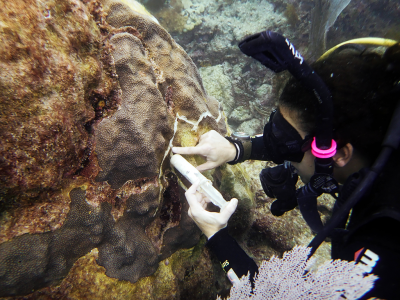
Above: Valeria treats a diseased coral with an antibiotic ointment.
SCTLD kills Caribbean corals very quickly; it affects more species than any other coral disease in the region, and spreads rapidly once it appears on a reef. Like many coral diseases, we don’t know the origin or the pathogen that causes SCTLD. Pioneers like Drs. Neely and Walker have tested many different methods and compounds to stop the disease from spreading within a colony; their knowledge of failures and successes, in addition to current treatment methods they are applying, is what I came down to learn.Dr. Walker and I drove to the marina, where we joined Dr. Neely and her team. After few days of wind, they had planned to go out to a few reef areas where they have been treating corals over the last few years. We (Drs. Neely, Walker and I) were particularly interested in Sombrero reef, a no-take reef that is very popular among locals and tourist. At the marina, we loaded the boat with diving gear and all the materials we needed for the day, including a submergible angle grinder.
Above (from left to right): Dr. Neely, Dr. Walker and Dr. Pizarro.
To get to the reef from the marina, we navigated a long channel at idle speed (no wake speed), which gave us time to prepare the SCTLD treatment composed of ointment and antibiotics.. Under Dr. Neely’s supervision, I mixed in a pot with a table knife and what looked like a dessert spoon; when the mixture was homogenous, we filled syringes with the mix. While I prepared the treatment, Dr. Neely told me of her experience with SCTLD, and the different treatments they have tried on corals: applying epoxy directly into the lesion, the ointment we are using (Base2b) with chlorine, and what they are using now: ointment with amoxicillin. We talked about all kind of things related to the disease, their successes as well as their failures.At Sombrero’s reef, Dr. Walker showed me how to assemble and disassemble the angle grinder and explained how to use it underwater. The angle grinder is used to create a firebreak for the disease. It follows the path of the disease, about 4 cm from the disease lesion into the coral tissue. Before jumping into the water, Dr. Neely and Dr. Walker talked about disease identification, how to decide when to treat a diseased colony, when to apply only antibiotic paste and when to do a firebreak, or “disease-break,” as Dr. Walker call it. After I asked as many questions I could think of and Dr. Neely explain what we were going to do besides my training, we got ready, geaedr up and jumped in the water.
Above: Divers spot a star coral colony with Stony Coral Tissue Loss Disease.
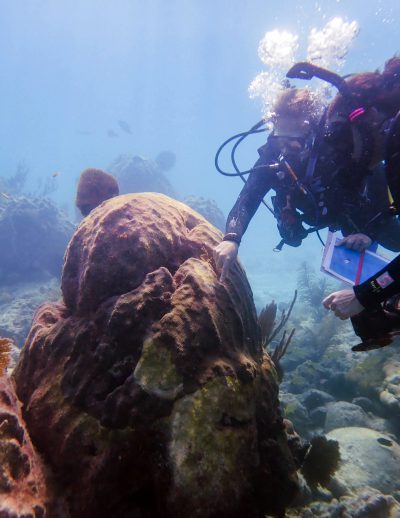
Above: Valeria inspecting the angle grinder.
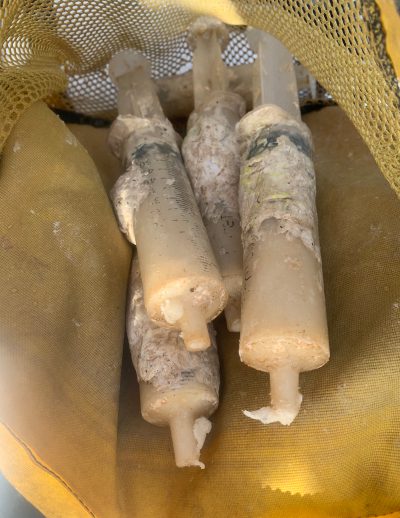
Above: The topical antibiotic in a syringe, that will be used to treat the disease lesion.
Dr. Neely’s had already tagged about 60-80 corals on this reef. Every time they visit the reef, they monitor all tagged corals and tag new ones if they see one un-tagged coral with SCLTD.We started in an area where big colonies of the mountainous star corals used to thrive (before SCTLD). For a coral scientist like me, without experience with SCTLD, the disease on the reef was evident; many of the star corals were dead but most of them are diseased with small portions of living tissue.This is bad news for corals, coral reefs, diversity and finally for us humans.
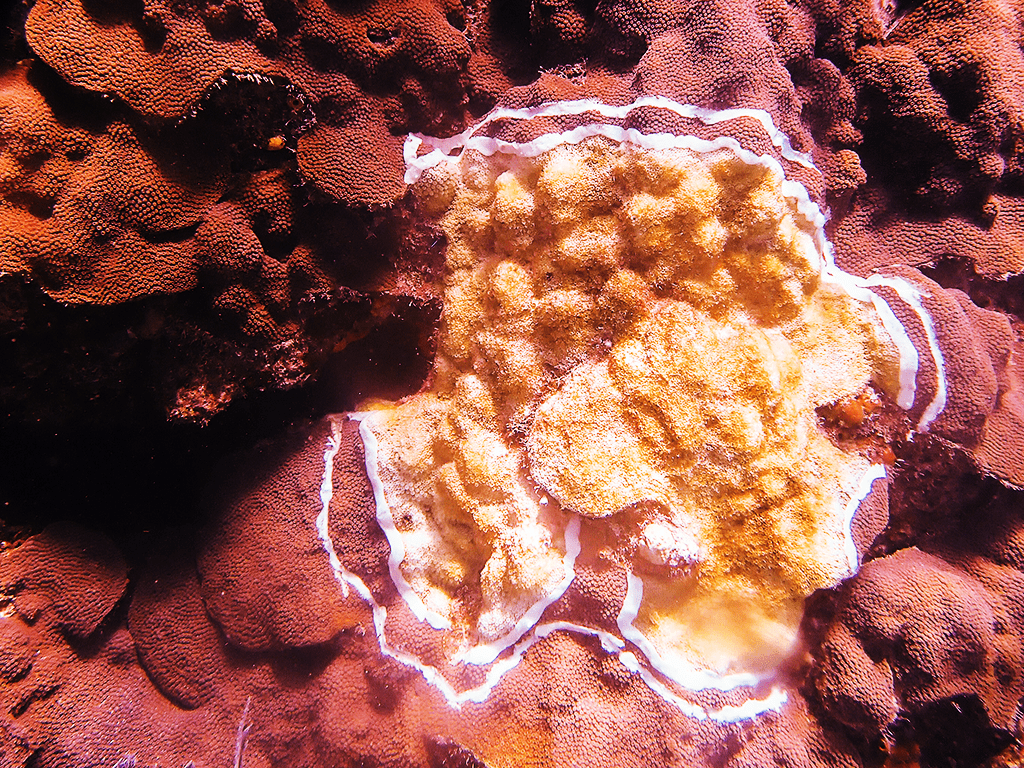
Above: A star coral treated for SCTLD.
After some time, Dr. Neely showed me a colony; it was a big star coral colony that has dead patches all around it with a distinctive white band. She pointed to where the disease was active, sadly in almost all the dead areas. This means that the coral is diseased and dying. Drs. Neely and Walker decided to create a disease-break and apply the antibiotic paste in the break, as well as in the area where the disease is present along the coral tissue.Dr. Neely treated the first disease-break. It looked easy, I felt ready for it. I took the grinder – it was heavy – and tried to activate it and failed!Managing this power tool underwater is more difficult than planned and I felt worried; I didn’t want to hurt the colony more, and I didn’t want to fail my instructors. My first disease-break looked terrible compared to Dr. Walker’s. I truly apologized to the coral colony, and following Dr. Neely’s footsteps, applied the ointment. That was easy; I had to ensure the lesion was well-covered, including crevices.I used the grinder again, took a deep breath and started; it got easier, but I was still clumsy. By my third colony, I realized I needed to slow down. I needed to take my time to do it so I didn’t hurt the colony (the grinder can slide and damage all polyps it get contact to). I still need a lot of practice to be as good as Dr. Walker.
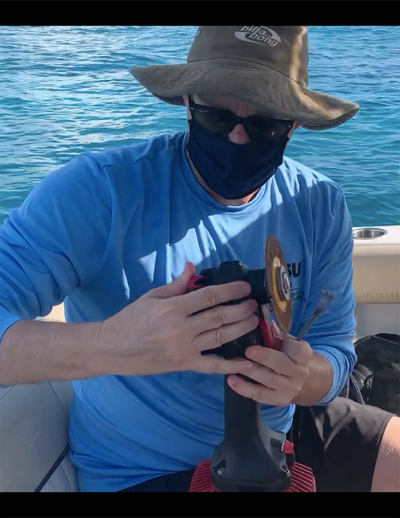
Above: Dr. Walker fiddles with the angle grinder.
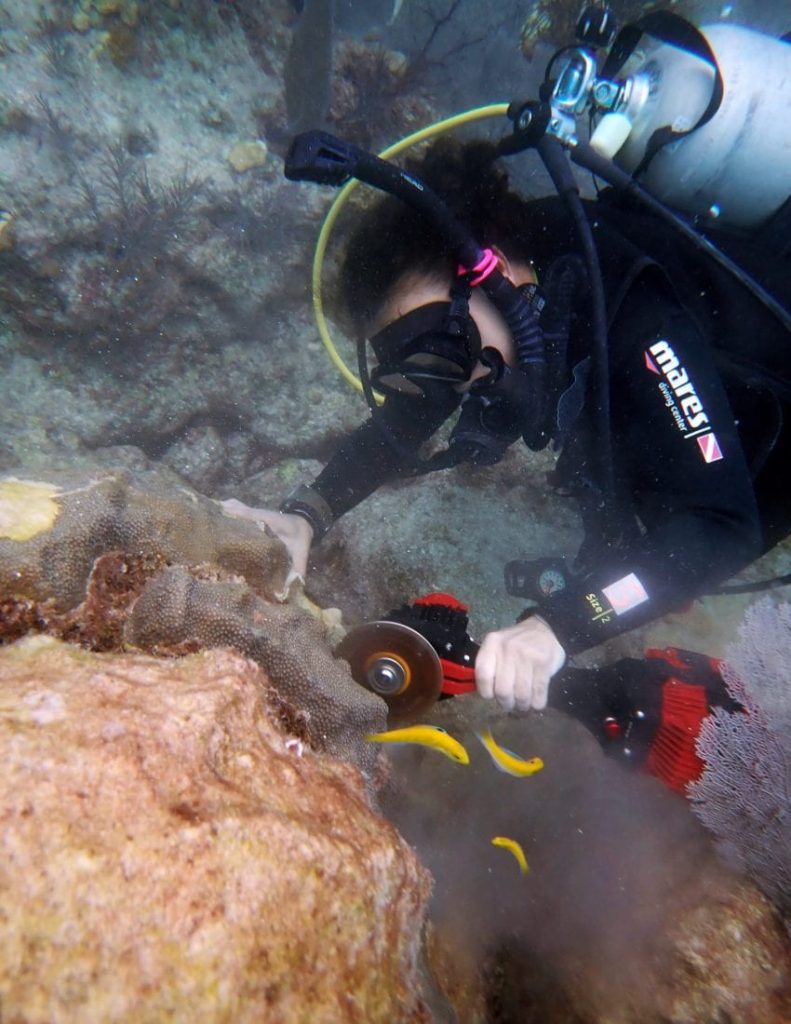
Above: Using the angle grinder, Valeria cuts a “disease-break” above the SCTLD lesion.
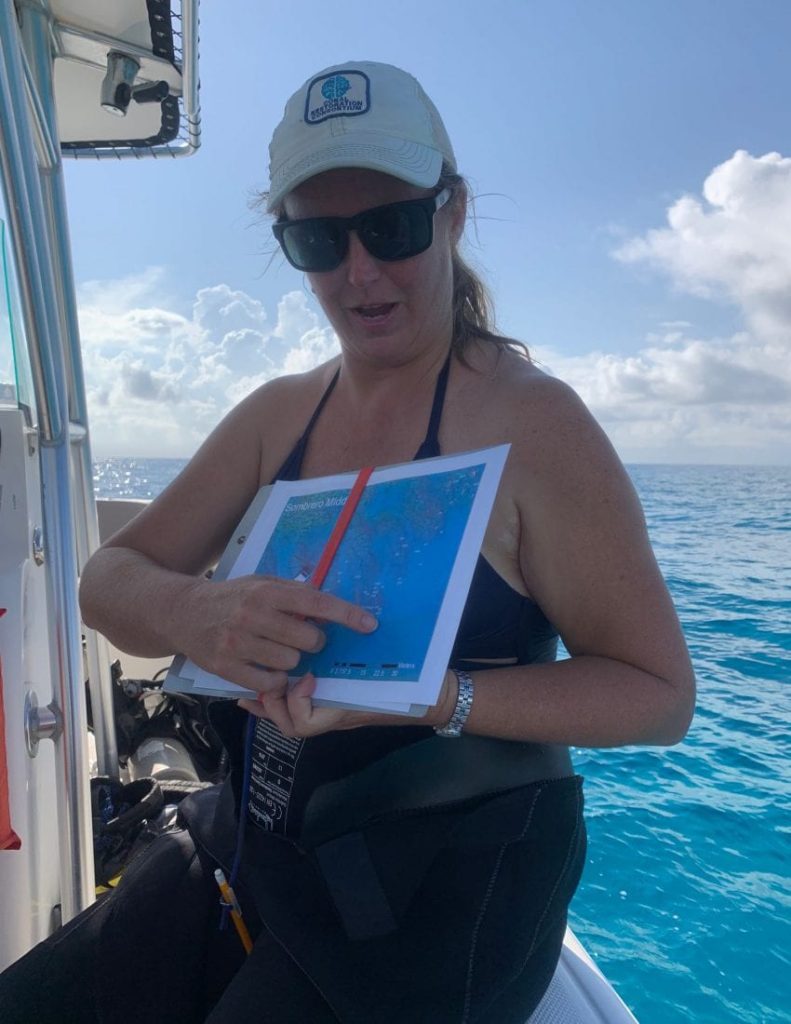
Above: Dr. Neely discusses her SCTLD treatment research.
By the end of the day, I had learned the basics of SCTLD treatment, thanks to the Nova Southeastern University team. Now, I feel ready to begin treating corals in The Bahamas. This disease is very serious and could diminish coral populations quickly.Our hope, as part of The Bahamas SCTLD Task Force, set by The Bahamas government, is to treat as many corals as we can. This treatment is one of many task force strategies in the works, including research & restoration, treatment & response, and communications & tracking.
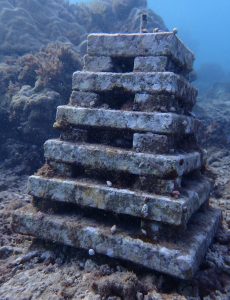
Unveiling Coral Reef Biodiversity: Insights from ARMS Monitoring Structures
An ARM teeming with new coral recruits and a diversity of marine life, highlighting reef recovery and biodiversity Understanding Coral Reef Biodiversity Most new PhDs

7 Essential Insights from COP16: Tackling Coral Reef Conservation Challenges Amid Climate Change
United #ForCoral: Experts, advocates, and leaders from across the globe join forces at COP16 for the #ForCoral conference, hosted by the International Coral Reef Initiative.
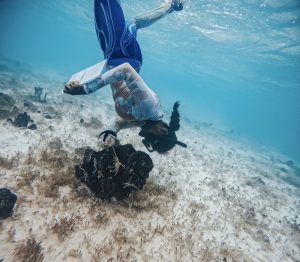
Fieldwork Wrap-Up: Strengthening MPA Management in The Bahamas
Marine protected areas (MPAs) are critical tools in the conservation of marine species and habitats, safeguarding reefs, seagrasses, and mangroves that provide vital ecosystem services
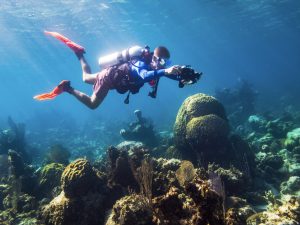
Coral Reef Monitoring with Photogrammetry: A New Era in Reef Health Assessment
Coral reefs are some of the most biodiverse ecosystems on the planet, providing crucial habitat for marine life and protecting coastal regions from erosion. Yet,
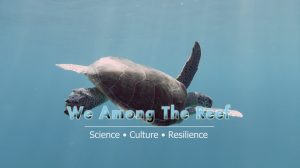
Watch “We Among the Reef:” A Documentary on the Abaco Barrier Reef
The Perry Institute for Marine Science invites you to watch “We Among the Reef,” a compelling documentary that illuminates the significance of the Abaco Barrier

Guardians of the Deep: With Training from PIMS, Key Government Staff Become PADI Certified Divers
Akehia Thompson (DMR), Quetta Gibson (DMR), and Gilles Deal (DEPP) share a moment of camaraderie in their scuba gear, embarking on their training journey with



